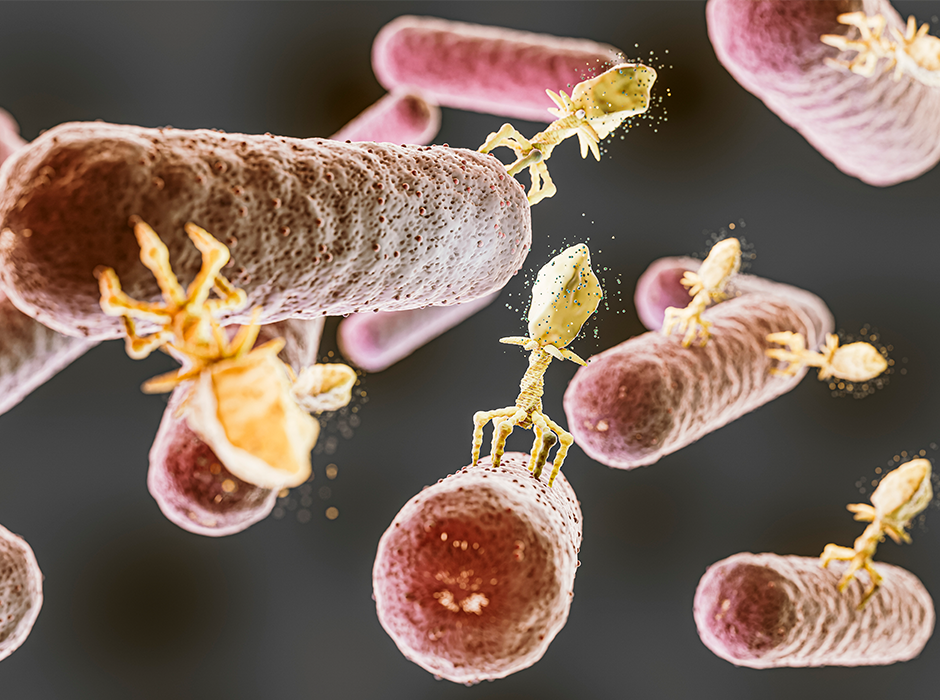
An international team of Otago-led researchers is studying the microscopic arms race between bacteria and phages. Their latest study, published in "Nature", analysed a protein phages use when deploying anti-CRISPR.
An unexpected find has enabled important progress to be made in the battle against harmful bacteria.
An international team of researchers, led by Professor Peter Fineran from the University of Otago, investigated a particular protein used by bacteria-infecting viruses, known as phages.
Research into this microscopic arms race between bacteria and phages is important as it can lead to alternatives to antibiotics.
Published in prestigious international journal Nature, the study analysed a protein phages use when deploying anti-CRISPR, their method of blocking the CRISPR–Cas immune system of bacteria.

Dr Nils Birkholz
Lead author Dr Nils Birkholz, of Otago’s Department of Microbiology and Immunology, says understanding how phages interact with bacteria is an important step on the path to using phages against bacterial pathogens in human health or agriculture.
“Specifically, we need to know about the defence mechanisms, such as CRISPR, that bacteria use to protect themselves against phage infection, not unlike how we use our body’s immune system against viruses, and how phages can counteract these defences.
“For example, if we know how phages kill a specific bacterium, this helps identify appropriate phages to use as antimicrobials. More specifically, it is important to understand how phages control their counter-defence arsenal, including anti-CRISPR, upon infection – we must understand how phages regulate the expression of genes that are useful in their battle against bacteria,” he says.
The research revealed just how carefully phages need to deploy their anti-CRISPRs.
“We already knew that a particular phage protein has a part, or domain, that is very common in many proteins involved in gene regulation; this helix–turn–helix (HTH) domain is known to be able to bind DNA sequences specifically, and depending on the context, can turn a gene on or off.
“What we found is the HTH domain of this protein is much more versatile and exhibits a regulatory mode, which was previously unknown. It can use this domain to not only bind DNA, but also its RNA transcript, the molecule which acts as a mediator between the DNA sequence and the anti-CRISPR encoded in it.
“Because this protein is involved in regulating the production of an anti-CRISPR, it means this regulation has additional layers – it happens not only through the DNA binding mechanism, but also through the new mechanism we discovered of binding the messenger RNA.”

Professor Peter Fineran
Professor Fineran says the finding could have big implications for the understanding of gene regulation.
“Unravelling this unexpectedly complex regulation is important progress when it comes to understanding how phages can evade CRISPR–Cas defences and kill target bacteria in a range of applications.
“The discovery is particularly exciting for the scientific community because it shows a novel regulatory mechanism in a well-studied family of proteins.
“HTH domains have been thoroughly investigated since they were discovered in the early 1980s, so we initially thought our protein would act just like any other protein with an HTH domain – we were very surprised when we uncovered this new mode of action.
“This finding has the potential to change the way the field views the function and mechanism of this critical and widespread protein domain, and could have big implications for our understanding of gene regulation,” he says.